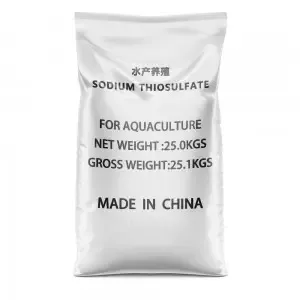



Understanding the Chemical Formula and Properties of Sodium Chlorate
The Significance and Applications of Sodium Chlorate Understanding Its Chemical Formula
Sodium chlorate, with the chemical formula NaClO₃, is an important compound that plays a significant role in various industrial applications. Understanding its properties, production methods, and uses provides valuable insights into its significance in contemporary science and industry.
Chemical Structure
Sodium chlorate consists of sodium (Na), chlorine (Cl), and oxygen (O) atoms, forming a crystalline salt that is white in appearance. The molecule is composed of one sodium ion (Na⁺), one chlorate ion (ClO₃⁻), where the chlorate ion features one chlorine atom covalently bonded to three oxygen atoms. This arrangement gives sodium chlorate its unique chemical properties, making it a useful compound in numerous applications.
Production
Sodium chlorate is primarily produced through the chloralkali process, which involves the electrolysis of sodium chloride (table salt) in the presence of water. This process generates sodium hydroxide (NaOH), hydrogen gas (H₂), and chlorine gas (Cl₂). The chlorine gas can then react with sodium hydroxide to form sodium hypochlorite (NaOCl). Further oxidation of sodium hypochlorite yields sodium chlorate. Alternatively, sodium chlorate can be produced by reacting sodium hydroxide with chlorine dioxide (ClO₂).
The industrial manufacture of sodium chlorate is characterized by careful control of temperatures and concentrations to maximize yield while ensuring safety, as chlorine and its derivatives can be hazardous.
Uses of Sodium Chlorate
chemical formula sodium chlorate

One of the primary uses of sodium chlorate is in the production of chlorine dioxide (ClO₂), a powerful bleaching agent in the pulp and paper industry. Chlorine dioxide is preferred over chlorine for bleaching because it produces fewer harmful byproducts and is less environmentally damaging. The pulp bleaching process offers significant economic advantages, making sodium chlorate a key reagent in this sector.
In addition to its bleaching properties, sodium chlorate is also used as an herbicide. It acts as a non-selective weed killer, effectively controlling unwanted vegetation in agriculture and forestry. By disrupting the photosynthesis process in plants, sodium chlorate ensures significant reductions in competitive plant species, thus enhancing crop yields.
Sodium chlorate is also utilized in the production of explosives. When combined with various other chemicals, it serves as an oxidizing agent, enhancing the combustion of fuels and creating powerful reactions. However, due to safety concerns associated with handling and storage, the use of sodium chlorate in explosives must be managed with caution.
Environmental Considerations
While sodium chlorate has various beneficial applications, its production and use come with environmental considerations. The release of chlorine gas and other byproducts during its manufacturing process must be carefully controlled to prevent atmospheric pollution. Additionally, improper use or handling of sodium chlorate can lead to contamination of water sources. Therefore, strict regulations govern the production and application of sodium chlorate to mitigate any harmful ecological effects.
Conclusion
Sodium chlorate (NaClO₃) is a versatile chemical compound with significant importance across various industries, particularly in the bleaching of paper products and as an herbicide. Its efficient production methods and diverse applications contribute to its value in industrial processes. However, the environmental impacts associated with its use necessitate strict regulatory measures to safeguard ecological health. As industries continue to evolve, sodium chlorate's role in sustainability and efficient production remains a topic of ongoing research and development, highlighting the need for balanced usage in conjunction with eco-friendly practices. Understanding the chemical formula and applications of sodium chlorate is key to appreciating its contributions to modern technology and environmental stewardship.
-
Why Sodium Persulfate Is Everywhere NowNewsJul.07,2025
-
Why Polyacrylamide Is in High DemandNewsJul.07,2025
-
Understanding Paint Chemicals and Their ApplicationsNewsJul.07,2025
-
Smart Use Of Mining ChemicalsNewsJul.07,2025
-
Practical Uses of Potassium MonopersulfateNewsJul.07,2025
-
Agrochemicals In Real FarmingNewsJul.07,2025
-
Sodium Chlorite Hot UsesNewsJul.01,2025










